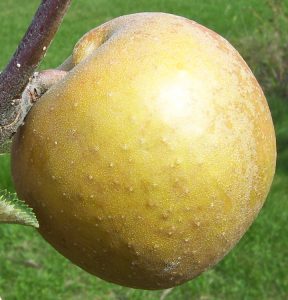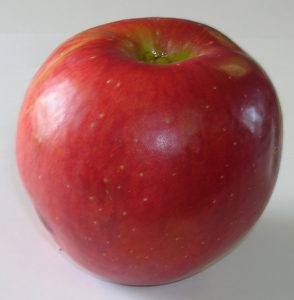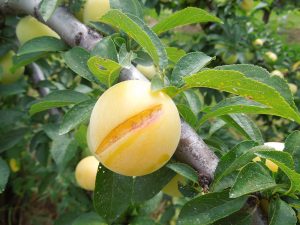Types of Fruit Trees
There are many types or species of fruit trees to choose from, but not all are suitable for a cold climate or short growing season. When choosing a fruit tree for a new orchard, consider its winter hardiness, disease resistance and the ripening date of the fruit. Flavor, suitability for baking, cider or preserves can also be deciding factors in selection.
Low winter temperatures limit which species or variety that can be grown. Poorly adapted varieties will be severely injured or die when exposed to temperatures they cannot tolerate. Apples and hybrid plums are the most winter hardy and can be grown in most locations. Peaches, cherries, pears, Japanese plums, and apricots are better adapted to southern and coastal areas, but have been known to survive in colder locations under the right conditions.
The US Department of Agriculture’s Plant Hardiness Zone Map divides the United States into zones according to the expected coldest winter temperature. Zone 1 is the coldest and Zone 11 the warmest. Within Zone 6, winter temperatures are expected to get as cold as -10ºF. Most tree fruits can survive in Zone 5, but peaches, sweet cherries, and Asian plums will suffer from winter injury in colder years. More northern and western regions fall within Zone 4, which is expected to get as cold as -30ºF, too cold for peaches, nectarines, apricots, cherries, Asian plums and European plums. Some varieties of pear and plum will tolerate winter in Zone 4. The most northerly regions are within Zone 3, and only a few varieties will survive the cold in this region.
| Hardiness Zones in Maine | Expected Midwinter Low Temperature |
|---|---|
| Zone 3 | -40 to -30ºF |
| Zone 4 | -30 to -20ºF |
| Zone 5 | -20 to -10ºF |
| Zone 6 | -10 to 0 ºF |
Apples
Apple varieties suggested for Zone 3 are Beacon, Chestnut Crab, Duchess, Haralson, Snow, Lobo, Minjon, Oriole, Red Baron, State Fair, and Wealthy. For Zone 4, Alexander, Almata, Black Oxford, Duchess of Oldenburg, Fireside, Honeycrisp, Jonathan, Keepsake, Liberty, Lodi, Milden, Northern Lights, Paula Red, Prairie Spy, Pristine, Red Duchess, Richeleau, SnowSweet, William’s Pride, Wolf River, Yellow Transparent, Zestar!, and those listed for Zone 3 are recommended. Varieties not listed here may also be sufficiently hardy for your area. Additional information on winter hardy varieties can be found in nursery catalogs and websites.
Northern regions typically have a short growing season, too short for some apple varieties. Braeburn, GoldRush, Granny Smith, Mutsu, Pink Lady, Rome Beauty, and Winesap may not ripen before the first freeze when grown in a short growing season. It is possible to grow varieties that ripen after Golden Delicious, but in some years, they may still be on the tree when the first freeze occurs.
Apples succumb to the disease called “apple scab,” a common problem in wet climates. To avoid this disease, select resistant varieties such as Pristine, Enterprise, Freedom, Liberty or CrimsonCrisp. Other varieties have partial resistance to apple scab, Honeycrisp, Hudson’s Golden Gem, and Wolf River. For more information on varieties with resistance to scab, refer to the section on diseases.
Pears
There are two types of cultivated pears, European and Asian. European pears have the classic pear shape and are soft when ripe. Asian pears are typically round in shape and remain crispy when ripe. European pears have greater winter hardiness, but less disease resistance than Asian pears. Pears are also slow to bear fruit and generally grow to a large size.
Cold hardy European pear varieties suggested for Zone 4 are Clapp’s Favorite, Flemish Beauty, Golden Spice, Gourmet, Harrow Delight, Luscious, Maxine, Parker, Patten, and Seckel. There may be other hardy varieties not listed here. Fire blight disease a major problem in regions with warm, humid weather, but planting varieties with resistance can prevent outbreaks when they do occur. Blakes’ Pride, Harrow Delight, Magness, Maxine, Potomac, and Seckel have resistance to fire blight.
Perry pears, a group of European varieties, have traits that make them suitable for fermentation of their juice into perry, an alcoholic beverage that is similar to hard cider. As a dessert pear, these varieties may be unpalatable because of sourness and astringency.
Asian pears are hardy into Zone 5, but do not tolerate fluctuating winter temperatures. Shinseiki, Kosui, Hosui, Nijisseiki, Korean Giant, and Chojuro are common varieties. Tree size can vary among the varieties with some varieties growing into a large tree and others remaining small.
Quince

Quince, an uncommon type of fruit, is prized by some for its attractive flowers and unique flavor. It is closely related to pear, but the fruit have a tough skin and flesh, so they are best used as preserves or jelly. They ripen in the fall and require a long growing season, so select varieties that do not require a long season. Since it is not widely cultivated, trees are available primarily from specialty nurseries that ship bare root trees in springtime. Smyrna, Van Deman, Limon, and Pineapple are names of some quince varieties. As a naturally dwarf tree, quince trees require less space than most other fruit trees.
Most quince trees are hardy into Zone 5 (-20°F), but some varieties may tolerate the winter in Zone 4 (-30F). Most lack resistance to the diseases fire blight and quince rust.
Flowering quince is a different species than the one that is cultivated for fruit. Flowering quince has greater winter hardiness, but bears fruit of inferior quality.
Plums
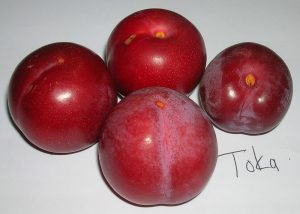
Plums are a stone fruit along with cherry, peach, nectarine, apricot and almond. Several species of plum exist, so they are highly variable in color and flavor, as well as climactic adaptability and disease resistance. In spring, the abundant, white flowers attract native bees.
Despite the existence of many different plum species, only two are widely grown, Asian and European, and they differ in many ways. The Asian plum, also called the Japanese plum, ripens earlier, over a two-month period beginning in late July and continuing through September. Asian plums come in many colors ranging from pale yellow to dark purple, but most have a light purple skin and yellow flesh. A few varieties have red flesh. They are more sour than European plums. Because it is a hybridization of several plum species, the Asian type is highly variable in cold hardiness. Some varieties are very tender and cannot be successfully grown in colder regions. Others are extremely hardy and can be grown in Zone 4 and possibly Zone 3. European plums begin to ripen in mid-August with late varieties ripening in late October. They range in shape from oblong to round and are less variable in color than Asian types, usually purple skin with yellow flesh. European plums are hardy enough to be grown in the warmer part of Zone 4.
Many varieties of Japanese plum survive temperatures as cold as -20°F, such as Early Golden, Ozark Premier, Methley, Obilinaja, Shiro and Vanier. However, warm temperatures during winter months that are followed by severe cold will damage some of these hardy varieties. For the coldest regions, select the type of plum that was cross bred with the American species to allow gardeners to grow plums in zone 4. Varieties with sufficient hardiness for Zone 4 (-30°F) are Alderman, Black Ice, LaCresent, Pipestone, South Dakota, Superior, Toka, Underwood, and a few others.
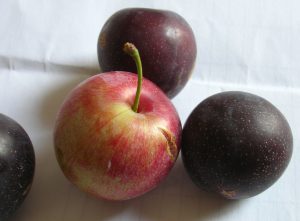
Asian plums are susceptible to two difficult problems that are managed by selecting good varieties. When rain occurs as fruit ripen, the skin of some varieties will split open and cause fruit decay. Shiro, Methley, Elephant Heart and Superior are prone to rain-induced skin cracking. Toka, Vanier and Obilinaja are less prone. The second problem is susceptibility to the disease black knot. The disease black knot can infect many varieties, but Obilinaja, Superior and Toka resist infection to a greater extent than other Asian plums.
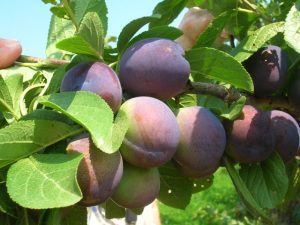
European plums ripen a few weeks later than Asian plums and are generally more susceptible to black knot disease. The prune types are elongated in shape and very sweet in flavor. They can be eaten fresh or dried into prunes. The gage types are round in shape and also taste sweet, but are prone to cracking after a heavy rain. The damson types are small and round in shape and tart in flavor making them better for preserves than for eating as fresh fruit. Most European plums are hardy to -20°F, or in Zone 5, but several varieties will tolerant the cold temperatures in Zone 4. For colder sites, select Italian and Mount Royal. For best disease resistance, select President, Green Gage, Early Italian, and Bluebyrd. Black knot is problematic for varieties such as Stanley, Rosy Gage, and many other varieties.
Because the two most common types do not adequately cross pollinate each other, poor yield is a common problem for plum growers, but can be prevented by planting several varieties that are the same type or species. Plant Japanese plums with other varieties of Japanese plums.
|
|
|
Several types of wild plum resemble the Asian plum, but are better options for the coldest climates. Fruit size is typically smaller than domesticated plum types, and their growth habit can be more like a shrub than a tree. The American plum produces small fruit in summer that can be eaten fresh or preserved. The cherry plum, a cross of wild cherry and plum, also has good hardiness. Several varieties are now available from specialty nurseries, Compass, Red Diamond, and Opata. Another type of cherry plum, the cerasus species or Myrabalan plum, has small yellow or red fruit with sour flavor, but lacks the hardiness of other wild plums. Since it is the most commonly used rootstock for plums, it can be found in orchards where the root system has survived longer than the cultivated variety. Beach plum, native to the east coast, also grows small, palatable fruit, but may be too sour for some.
Cherries
Three types of cherry predominate the cultivation of this fruit. Sweet cherry grows into a large tree that blooms early and is very prone to frost damage to its blossoms. It is also highly susceptible to disease. Sour cherry, primarily grown for preserves and pies, is naturally a semidwarf tree with good winter hardiness and greater tolerance of spring freezes. The duke cherry, a hybrid of the sweet and sour cherries, has traits common to both. It grows into a large tree with flower buds that become tender in spring. The fruit remain sour until they are fully ripe. Several wild species of cherry exist that are not widely cultivated, but have the potential for growing cherries in the coldest climates.
Sweet cherries are hardy in Zone 5, but spring frosts frequently pose a problem because they bloom before the danger of frost has passed. As spring temperatures rise, the flower buds resume growth and are killed by freezing temperatures that occur just before or during bloom. Rain-induced cracking of the fruit is common among sweet cherries, so select varieties that tolerate heavy rainfall, such as Attika, Benton, Black Gold, Hartland, Stardust, Regina, Schmidt, and Vandalay. Cherries are also highly susceptible to the disease brown rot, and resistant varieties are not available.
Tart cherries are hardy in Zone 5, with a few varieties hardy in the southern part of Zone 4. For northern Maine, the hybrid sour cherries such as Carmine Jewell may have enough cold hardiness for good survival. Varieties suggested for Zone 4 are Evans, Mesabi, Meteor, and North Star. Like sweet cherry, the tart cherry flower buds are tender in late winter and early spring.
A third type, duke cherry, has traits common to both the sweet and sour types. Fruit remain sour until fully ripe, finally developing a sweet flavor. Trees can be vigorous and large like sweet cherry, but flower bud hardiness in spring is slightly better. Balaton, May Duke and Almaden are a few of the varieties available.
Cherries are prized by birds which can devour the entire crop in one day. To protect fruit from birds, drape netting over cherry trees during the harvest period. Historically, sweet cherry trees grew to a size that was too large for easy netting. However, through traditional breeding and grafting to rootstocks, dwarf types of sweet cherry trees are now available from a number of nurseries and garden stores. For more information on dwarf fruit trees, refer to the section on dwarf trees and rootstocks.
Apricots and Plum-Apricot Hybrids
Apricot trees are generally hardy through the winter, but quickly become tender as temperatures rise in late winter. Consequently, they suffer from winter injury and have a short lifespan in cold climates. Plum-apricot hybrids, called plumcots, and apriums, also have a short life span in cold regions. Spring Satin is a plum-apricot hybrid with fruit that closely resembles a plum, but does not tolerate the freeze-thaw cycles of late winter.
Peaches and Nectarines

Peaches are an easy-to-grow fruit despite their lack of cold hardiness. Compared to other types of tree fruits, the fruit can be relatively free of insect problems, but the trees can be killed by trunk boring insects. In cold climates, peaches have a short life expectancy of about seven years, but severely cold temperatures can kill trees at any age. On the other hand, hardier varieties planted in a good site can live 20 years or more. Good tree care and planting in sites with good airflow improves tree survival.
Nectarines are identical to peaches with the exception of their smooth peel, and consequently have the same cultural requirements. However, they are not as hardy as peaches and may pose more of a challenge to the home gardener. Peach trees are generally adapted to Zone 6, and some varieties can be grown in Zone 5 (-20°F).
There are two types of cultivated peaches which vary in eating quality and how they are used. Freestone peaches have a melting flesh that makes them great for eating fresh. Clingstone peaches have a dense flesh that makes them useful for canning. Among the freestone peaches, some varieties have a flattened shape and are called doughnut or Peento peaches. Peaches also vary in their flesh color with yellow being the most common, but some have white or red flesh. With many different peach varieties available, consider winter hardiness and disease resistance to prevent long-term problems. Fruit quality, ripening date, and showiness of the flowers can also be important considerations in choosing a variety.
Important Traits of Common Peach Varieties
| Variety | Cold Hardiness | Ripening Date | Leaf Curl Resistance | Bacterial Leaf Spot Resistance | Blossom Appearance |
|---|---|---|---|---|---|
| Canadian Harmony | good | mid Sept. | Fair | fair | fair |
| Contender | good | mid Sept. | Fair | good | fair |
| Elberta | fair | late Sept. | good | poor | fair |
| Harken | good | mid Sept. | good | good | fair |
| Harrow Beauty | fair | mid Sept. | fair | good | fair |
| Madison | good | mid Sept. | fair | fair | fair |
| PF-24C | good | early Sept. | fair | fair | fair |
| Polly | good | Sept. | poor | fair | fair |
| Salish Summer | fair | mid Sept. | good | fair | good |
| Reliance | good | mid Aug. | poor | fair | fair |
| Redhaven | good | late Aug. | good | fair | poor |
| Saturn | unknown | unknown | fair | good | good |
| Starfire | good | early Sept. | unknown | good | fair |
For more information, see Bulletin #2068 Growing Peaches in Maine.

